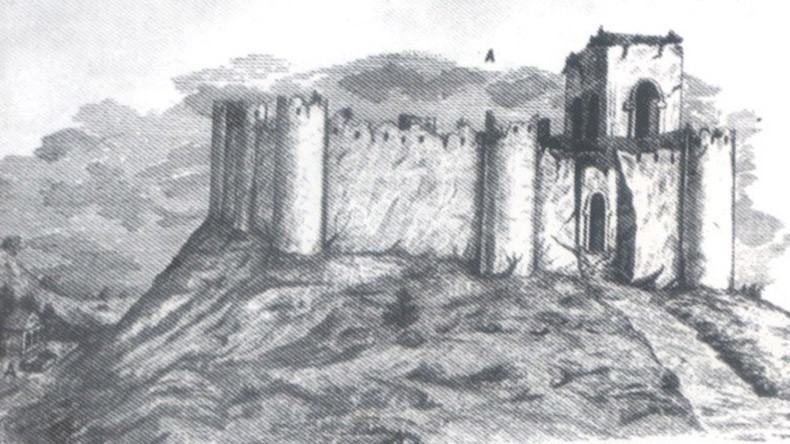
Military chronicler of Russian Empire: Refusing to meet Persians with bread and salt, Armenians were doomed death
Karabakh was clean. Glorious for Russia and fatal for Persia, 1813 ended with brilliant victories, which finally crushed the Persian Shah’s nine-year-old persistence. Persia made peace with the Russian Empire, and all the Muslim khanates surrounding Georgia were transited to the control of Russia in perpetuity, writes General of the Russian army Vasily Aleksandrovich Potto, a military historian referred to as the ‘Nestor’ of the history of the Caucasus, in his fundamental research ‘The First Volunteers of Karabakh,’ published in Tiflis in 1902.
Armenian yuzbashis, Vani and Hakop Atabekov brothers, set on making Karabakh prosperous since the beginning of the ‘epoch of internal civil development.’ In 1814, the brothers had received khanate talagas (certificates). With them, they settled seven Armenian villages ruined and destroyed because of the Persian campaigns, which had exterminated all the traces of the culture, which once used to exist there. They were freed from post and road compulsory services, as well as from taxes and duties.
In 1819, Vani Yuzbashi set off to Dagestan with a detachment of Armenian horse squad upon Knyaz Valerian Madatov’s call, who was controlling the Muslim khanates. However, Potto writes that there is no detailed information about that episode of the Armenian melik’s biography.
“With the beginning of the summer of 1826, the Persian hordes suddenly rushed into our lands without declaring war. The thunder first hit the defenceless Armenian population,” Potto writes.
At the beginning of the war, the Persians’ raids reached as far as the areas surrounding Tiflis, and one of the groups broke into Haghpat Monastery, where venerable Patriarch Ephrem lived, whom the Persians long wanted to take captive. “Fortunately, the terror of the Persian cavalry, the celebrated Archbishop Gregor Manucharyants, famed still in Gudovich and Tsitsianov’s times with his heroic exploits and decorated with the Orders of George, Vladimir and Anna, gathered forty courageous bold Armenians and set for Haghpat Monastery taking the Patriarch to Tiflis from there a few days before the Persians’ arrival,” Potto writes.
While the Armenians and Russians were fighting against the Persian troops, which had killed Armenian civilians, the Tatars took advantage of the chaos to loot the peaceful villages. After Manucharyants was able to take Ephrem the Patriarch to Tiflis at the expense of enormous victims, he took the Armenian squad and rushed to Shamshadil, which was in ‘complete upheaval.’ There, he used both admonitions and force to restrain the Tatars, who sought to plunder the peaceful villages. Moreover, he defeated several Persian groups and freed over 500 Armenian families from captivity.
Meanwhile, the main Persian army entered Karabakh and sieged Shushi, where six companies of the 42nd Egersky Regiment under Colonel Reut’s command were locked. The three companies in Zangezur were cut off and laid their arms not being able to break through. According to Potto, they could be saved if their commander, Podpolkovnik Nazimka, trusted the Armenians, who wanted to bury the arms in their village Geryusi (Goris, – ed.), and take the detachment itself to Shushi along mountainous paths, as Vani had once done with the detachments of Karyagin and Ilyashenky. “Still, Nazimka did not accept the suggestion, and the companies were killed. Of the whole detachment of thousand soldiers, only two officers and six lower ranking soldiers were saved, as the Armenians managed to hide them in the village Kaladerasi, where they were welcome guests. After the Persians were driven out from Karabakh, they successfully joined the regiment,” he writes.
Here, the Armenian population’s plight was even worse than in Pambak and Shuragel. Only the inhabitants of the closest Armenian villages managed to save themselves behind the walls of the fortress and take an active part in its defence. Caught by surprise, the rest of the population was looted or slaughtered.
Abbas Mirza declared award for heads of Armenians and paid a gold coin for each. In the Persian horde, sixty people were waiting for their death under a strict guard. The village of Atabekov brothers, who hid in half-ruined fortress of Jermuk, could not escape being looted and ruined, either. “Of course, were the Armenians obedient, meeting the Persians with bread and salt as the Tatars did and sending the best of their young men to serve in their army, they would retain both their life and property. Yet there were no traitors among the Armenians, and they were all doomed to death. Vani was the saviour of the people in those difficult times,” Potto writes and points out that Vani had to pay a high price for saving his coreligionists.
Vasily Potto’s research ‘The First Volunteers of Karabakh in the Period of Establishment of the Russian Dominion (Melik-Vani and Hakop-Yuzbashi Atabekovs),’ dedicated to the history of the Atabekovs’ family, is based on various sources. This enabled the author to describe more precisely the history and images of the brave Armenian volunteers from the ancient Armenian dynasty of Atabekyans, as well as to cover the period of the annexation of Eastern Armenia into the Russian Empire and the historical events of the first quarter of the 19th century.
Related news
- Military chronicler of Russian Empire writes how Armenian melik from Artsakh saved Mehdi Kuli Khan
- Military chronicler of Russian Empire about Karabakh Armenians’ grateful son who saved Russian detachment from Persians
- Military chronicler of Russian Empire V.A. Potto about Artsakh’s Armenian melikdoms and ‘Tatar nomads’
- Scientific publication recounts historical data about C15th Armenian village Kusapat in Artsakh
Newsfeed
Videos






























